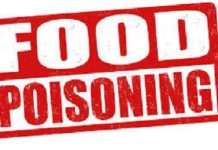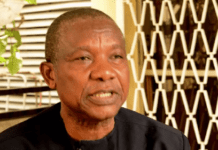The World Health Organisation (WHO) through the newly released World Malaria Report 2019, has disclosed that Nigeria and Democratic Republic of the Congo accounted for 84 million of the total 155 million malaria cases in the 11 high burden to high impact (HBHI) countries in 2018; while Ghana and Nigeria reported the highest absolute increases in cases of malaria in Africa in 2018.
Although there was reduction in the malaria burden from some countries in 2018 compared to 2017, such as in Uganda and India, where there were reported reductions of 1.5 and 2.6 million malaria cases, respectively, in 2018 compared with 2017; but Nigeria and Ghana still had increased cases in the year under review.
However, Nigeria was not totally in bad light from the report, as it revealed that Nigeria had the largest reduction in malaria deaths, from almost 153 000 deaths in 2010 to about 95 000 deaths in 2018, with the total deductions from about 400 000 in 2010 to about 260 000 in 2018.
It was also noted that the number of pregnant women and children in sub-Saharan Africa sleeping under insecticide-treated, bed nets and benefiting from preventive medicine for malaria increased significantly in recent years, though malaria afflicted 228 million people and killed an estimated 405 000, mostly in sub-Saharan Africa.

The report explained why concerted efforts were placed on pregnant women and infants, as pregnancy reduces a woman’s immunity to malaria, making her more susceptible to infection and at greater risk of illness, severe anaemia and death. Maternal malaria also interferes with the growth of the fetus, increasing the risk of premature delivery and low birth weight – a leading cause of child mortality.
According to WHO Director General, Dr Tedros Adhanom Ghebreyesus, “Pregnant women and children are the most vulnerable to malaria, and we cannot make progress without focusing on these two groups. We’re seeing encouraging signs, but the burden of suffering and death caused by malaria is unacceptable, because it is largely preventable. The lack of improvement in the number of cases and deaths from malaria is deeply troubling.
“In 2018, an estimated 11 million pregnant women were infected with malaria in areas of moderate and high disease transmission in sub-Saharan Africa. As a result, nearly 900 000 children were born with a low birthweight.
“Despite the encouraging signs seen in the use of preventive tools in pregnant women and children, there was no improvement in the global rate of malaria infections in the period 2014 to 2018”, he said.
The report identified inadequate funding as a major barrier to future progress, noting that in 2018, total funding for malaria control and elimination reached an estimated US$ 2.7 billion, falling far short of the US$ 5 billion funding target of the global strategy.
Going forward, WHO has recommended adequate funding from governments and international donors to subdue the burden of malaria in globally, and particularly countries with highest burden.
It also recommended adequate coverage for pregnant women in the region, such as coverage of the recommended 3 or more doses of intermittent preventive treatment in pregnancy (IPTp), delivered at antenatal care facilities (ANC), as report showed increased from an estimated 22 percent in 2017 to 31 percent in 2018.
WHO recommends the use of effective vector control (insecticide-treated nets or indoor residual spraying) and preventive antimalarial medicines to protect pregnant women and children from the disease. Robust health services that provide expanded access to these and other proven that this control tools – including prompt diagnostic testing and treatment – is key to meeting the goals of the Global technical strategy for malaria 2016-2030 (GTS).
The current report indicated that too many women do not receive the recommended number of IPTp doses, or none at all. While some women are unable to access antenatal care services, others who reach an ANC facility do not benefit from IPTp as the drug is either not available or the health worker does not prescribe it.
For children under five living in Africa’s Sahel subregion, WHO recommends seasonal malaria chemoprevention (SMC) during the high-transmission rainy season.













